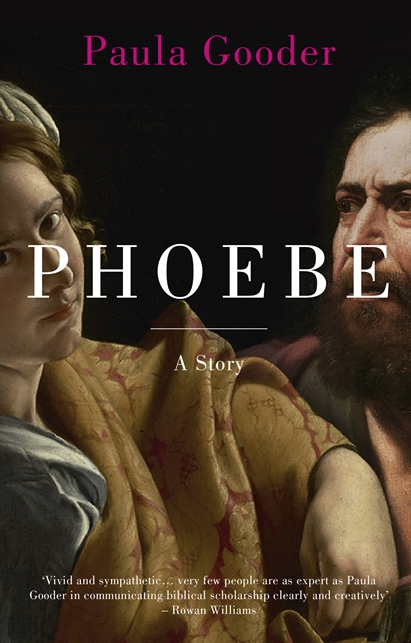Phoebe: A Story, by Paula Gooder
Entertaining and informative imagining of the life of a woman mentioned briefly in Romans
 Phoebe: A Story
Phoebe: A Story
By Paula Gooder
Hodder & Stoughton, 2018
ISBN: 9781473669727
Reviewer Andy Goodliff
If I asked most people 'do you know Phoebe mentioned in the Bible?' I’m not sure sure how many would reply, ‘you mean the deacon from the church in Cenchrae who carried the letter we know as Romans from Paul to Rome.’
The New Testament is full of women mentioned in passing, and Romans chapter 16 is the place where Paul commends Phoebe.
In this new book from Paula Gooder we are offered an opportunity to imagine the life of Phoebe and what might have happened to her on her arrival in Rome. This is a work of imagination for we know no more about Phoebe than the two verses in Romans 16, but Gooder seeks to base her story as far as possible in what we do know about life in the early church and life in Rome. Phoebe: A Story then is an exercise in what might be called faithful imagination.
There are lots of things to like about this novel. It made 2-D characters from the Bible feel like 3-D. Gooder brings alive the church in Rome and members of its congregation including Prisca (in the Bible also called Priscilla), Aquila, Andronicus and Junia (the latter definitely a woman and according to Paul, an apostle!), Herodion and Stachys. Gooder helps us imagine what it was like when the church met and the tensions within the community. Gooder offers a fascinating backstory for Phoebe, which lives in the realm of plausibility, and also allows her to explore the impact of the gospel.
While I enjoyed the book and thought it entertaining and informative, there were things I questioned. First, Paul’s letter the Romans, central to Phoebe’s visit, is read at the beginning of the novel, but then sits in the background. I wanted Gooder to tell us why Paul wrote the letter as he did, what was the purpose of chapters 1-4, 5-8 and 9-11, 12-15. I want Phoebe to be a more confident interpreter of the letter. At various points there were bits from the letter, but I was left struggling to know why Paul wrote the letter as he did.
Second, I wasn’t sure about the appearance of Peter: yes it helps the narrative, but he pops up a few times for a visit, which I wasn’t entirely convinced by.
Third, my own take on Paul and his life and thought comes from a different place to Gooder. I read Paul more apocalyptically, following the likes of Lou Martyn, Douglas Campbell and Beverly Gaventa. The point I most struggled with was Gooder’s portrayal of Paul being indifferent to the church in Rome once he does arrive — this does not match the Paul I see in much of his letters. There might have been narrative reasons behind this decision, it meant Paul remained in the background of the story and never in the foreground, but it jarred with my view. In making this set of observations, some more critical than others, the novel did lead me to consider my own view of how events might have unfurled on Phoebe’s arrival with the famous letter, and in this way Gooder engaged me in the characters and the story.
Not many have attempted what Paula Gooder has done here. She mentions in the notes section two other examples of Gerd Theissen’s The Shadow of the Galilean and Bruce Longenecker’s The Lost Letters of Pergamum. (I should mention that the book is two thirds the novel and one third a set of notes on the novel, showing here historical sources and explaining some of her narrative decisions, which is an added bonus.)
I thank her then for having a go, because it opened up the early church for me in a new light. It’s an entirely different skill-set to write a novel based in the New Testament world than just writing a book about it, and Phoebe is a wonderful edition to this tiny sub-genre in biblical scholarship.
A great read for anyone in your church or interested in what Christianity is about.
Andy Goodliff is minister of Belle Vue Baptist Church, Southend-on-Sea
Baptist Times, 04/09/2018